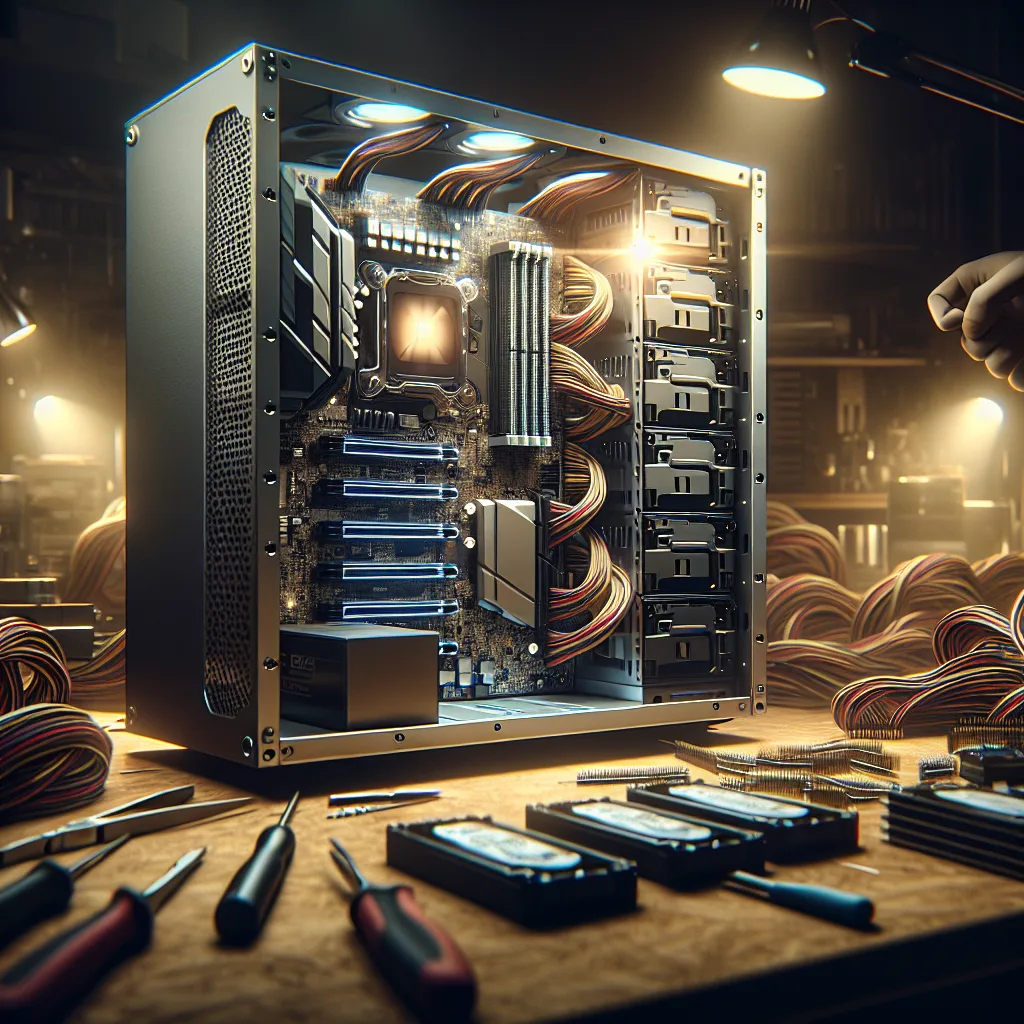Building a custom media server and confused about PSU wattage? Follow my journey and learn how to choose the right power supply for your rig.
I’m a tinkerer at heart. I love taking things apart, putting them back together, and making them my own. So when my old media server, a faithful Dell from 2006, was ready for retirement, I didn’t just want to buy a new box. I wanted to build one.
This wasn’t just any build. I was upgrading my gaming rig, which meant I had a bunch of powerful, relatively new components ready for a new home. My goal was to create the ultimate media server and disk-ripping machine for my family. We’re talking a serious setup:
- An i9-10900K processor
- 64GB of RAM
- A whole bunch of storage: four 1TB SSDs and four 3TB hard drives
- And for the main event: seven optical drives for archiving all our old physical media.
Yes, you read that right. Seven.
I was designing a completely custom case to house all this hardware. It’s a beast, with dedicated bays for all the drives and even front-mounted PCIe slots for extra ports. But as I was planning everything out, I hit a major roadblock.
Power.
The Big Wattage Question
My plan was to use two power supply units (PSUs). A main 750W unit for the core components and a smaller, older PSU just to handle some of the optical drives.
Why two? Because when I manually added up the maximum power draw for every single component, the total was scary high. It looked like the 750W PSU wouldn’t be enough on its own. So, the two-PSU plan seemed like a clever, if complicated, solution.
But then I plugged everything into PCPartPicker, a popular tool for planning builds. It gave me a much, much lower number—well within the range of my single 750W PSU.
So, who was right? My detailed, “worst-case scenario” math, or the trusted online tool?
Manual Math vs. Online Calculators
Here’s the thing about power consumption: it’s not a single, fixed number.
When you do the math by hand, you’re usually looking at the maximum possible power draw for each part. That’s the amount of power a component could pull if it were running at 100% capacity. Your CPU under a heavy benchmark, your graphics card rendering a complex scene, every drive spinning up at the exact same moment—it’s a perfect storm of power usage.
Does that happen in the real world? Almost never.
Your media server isn’t going to be transcoding 4K video, spinning up all seven optical drives, and running a stress test on all eight storage drives simultaneously. Most of the time, many of your components will be idle or close to it, sipping a tiny fraction of their maximum power.
PCPartPicker and other online calculators know this. Their estimates are based on more realistic, typical usage scenarios. They account for the fact that you won’t be redlining your entire system 24/7. That’s why their numbers are usually lower and often more practical.
So, What’s the Right Call?
In my case, the answer was to trust the PCPartPicker estimate, but with a healthy dose of caution.
While my manual calculation was an overestimate, it highlighted a crucial point: you need headroom. A good rule of thumb is to aim for a PSU that can handle your estimated load at around 50-60% of its total capacity. This is the sweet spot where PSUs are most efficient, generating less heat and running quieter.
A 750W PSU for an estimated 500W load is a great fit. It provides plenty of power for the current setup and leaves room for future upgrades (like the 3-fan radiator I’m planning to add).
Using two PSUs is certainly possible, but it adds a lot of complexity to the wiring and setup. For a build that’s already this custom, simplifying the power delivery is a smart move. Sticking with a single, high-quality PSU is safer, cleaner, and more reliable in the long run.
A Quick Word on the Case
Building a custom case from scratch is its own adventure. My design is focused on function, with massive bays for all the drives. The key challenge with any custom case is airflow. With so many components packed in, you have to be mindful of how cool air gets in and hot air gets out.
My advice if you’re thinking of doing something similar:
* Plan your airflow: Think about intake and exhaust fans from the very beginning.
* Cable management is your friend: With this many components, clean wiring isn’t just for looks; it’s crucial for good airflow.
* Think about the future: What else might you add? Leave space for it now, whether it’s more drives, a bigger cooler, or extra I/O.
This project has been a deep dive into the nuts and bolts of what makes a computer tick. And that power question? It was a good reminder that sometimes the “by the book” answer isn’t always the most practical one. Now, if you’ll excuse me, I have a case to finish.
